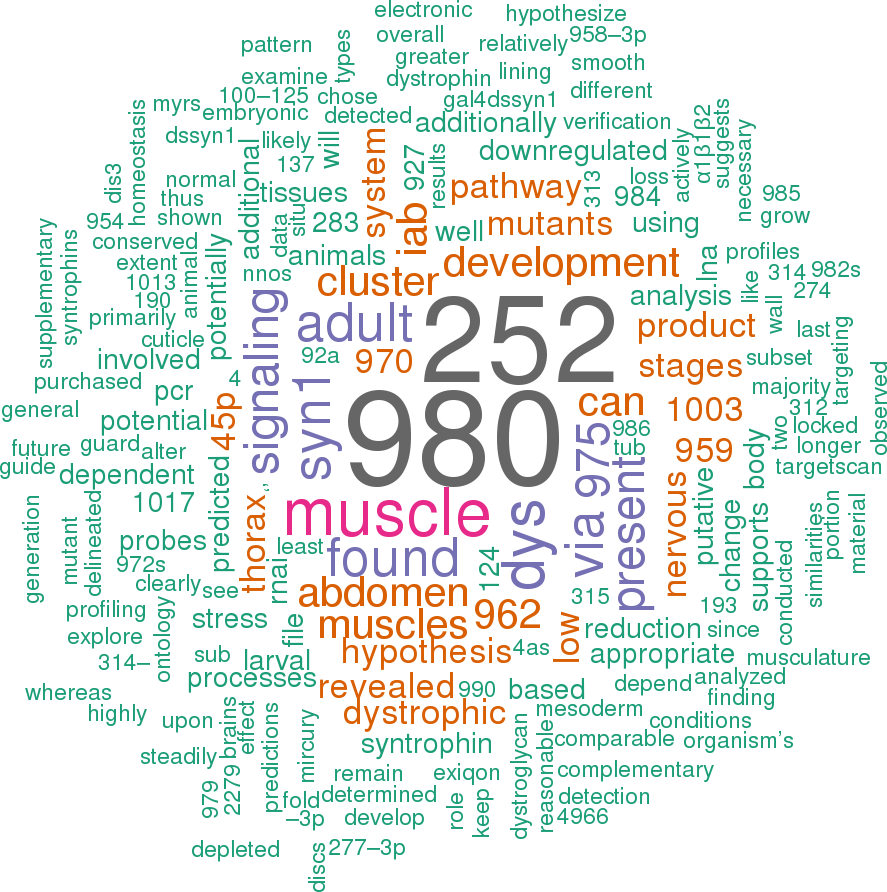4 papers mentioning dme-mir-956
Open access articles that are associated with the species Drosophila melanogaster
and mention the gene name mir-956.
Click the buttons to view sentences that include the gene name, or the word cloud on the right for a summary.

 |
 |
 |
 |
